Indochina, a region that comprises most of Mainland Southeast Asia, has been both an entrepot and battleground of influences from two ancient superpowers in Asia, India and China as the region’s name suggests. Coined in the early 19th century, the term has been used to describe what is now Myanmar, Thailand, Laos, Cambodia and Vietnam. The latter three were then collectively called French Indochina during more than sixty years of French colonialism in the region. However, the tug of war for domination between Indian- and Chinese-influenced local powers was probably the most evident in Vietnam.
Between the seventh to twelfth centuries, most of what is now central and southern parts of Vietnam was under the control of Champa, a collection of polities ruled by the Cham people whose traces in the region date back to as early as the second century AD. Like the Khmer to their west, the Chams were also predominantly Hindu. Numerous temples were erected in the span of centuries, many bearing distinctively Cham architectural elements and style different from those in India, the birthplace of Hinduism.
On the other hand, the northern part of today’s Vietnam was the realm of Dai Viet, an empire of the Viet people which was ruled by successive dynasties for centuries. The Viet themselves were closely related to the peoples from southern China, and influences from their ancestral land were palpable in many cultural aspects in the empire, from the use of Chinese script to the layout of their palaces. In fact, northern Vietnam was part of Imperial China for more than a thousand years until the Viet gained independence in the 10th century. Prior to its absorption into China under the Han dynasty – the second dynasty of Imperial China – in the second century BC, the region together with some parts of today’s southern China was called Nanyue, or Nam Viet – from which the modern name Vietnam is derived.
While the Viet society was largely agricultural-based, the Chams were known as seafarers. During its peak, Champa was among the major players in Southeast Asia’s spice and silk trade with China, making contacts and relations with other powers in the region inevitable. The Sailendras, a Buddhist royal dynasty from Java who built the magnificent Borobudur, raided the coasts of Champa in the eighth century. However, historical accounts suggest that the relations between the two were mostly conducted amicably, involving a special trade partnership among others. By the tenth century, Indo-Javanese architecture had developed in Champa, signified by Tantric Mahayana Buddhist themes which were similarly employed in contemporary Javanese art. In the 14th century, the Cham king Jaya Simhavarman III married a Javanese princess, Tapasi. This was followed by the marriage between a ruler from Majapahit (an eastern Java-based Hindu kingdom) and a Cham princess, Dvaravati, decades later.
I vaguely remember Champa from school textbooks many years ago. At that time the name Angkor for some reason was stuck in my head longer, and quite erroneously. On a school trip to Borobudur during my junior high school years, I talked to a Thai visitor and confidently exclaimed “Angkor!” I learned my mistake that day. However, like their neighbor to the west who built Angkor Wat, Bayon and Ta Prohm among other monuments, the Chams were also avid builders who constructed impressive and finely-sculpted Hindu-Buddhist temples.
In the late fourth century, the Cham king Bhadravarman built a hall containing a lingam – suggestive of the worship of Shiva during his rule – in what is now a forested valley where My Son Sanctuary compound is located. A stele recorded the king’s decision to dedicate the entire valley to Bhadresvara – another name of Shiva – and his grave warning to his successors not to destroy what he had given. Using the doctrines of samsara (endless cycle of death and rebirth) and karma, he further warned that if one destroyed his foundation, all of his/her good deeds in the person’s different births would be the king’s, and all the king’s bad deeds would be that person’s. On the contrary, if he/she maintained the endowment, the merit would belong to him/her alone. These words were so powerful and revered that My Son continued to be Champa’s religious center for many years.
In the sixth century when Sambhuvarman was king of the Chams, he rebuilt the temple of Bhadresvara which was previously destroyed by fire. In addition to that, he also began the construction of a highly-ornate temple whose tower rose to more than 20 meters above the ground, today known simply as A1. Over the centuries, successive kings added more edifices in the already temple-studded valley, further affirming My Son’s importance for generations of Chams. Among the most unique architectural styles developed by the locals was kosagrha, a structure topped with a saddle-shaped roof used either as a storage for precious items dedicated to the deities, or as a kitchen for the gods. However, the use of red brick for construction was very much consistent throughout the centuries.
Another consistent thing about Champa was their rocky relations with their neighbors. The constant enmity between Champa and Dai Viet resulted in several wars, including one in the 10th century when Indrapura – at that time capital of Champa – was sacked by the troops from the north. In the 11th century when Champa’s seat of power had already moved to Vijaya, Dai Viet launched another successful offensive. However, it remained capital of Champa following the relinquishment of several districts in the northern part of the kingdom to the Viet. Several years later, a new Cham king ascended the throne. He restored the temples at My Son, maintained peaceful relations with Dai Viet, but provoked the Khmer.
In the sixth year of the new king’s rule, Vijaya was sacked by the Khmer, an event which was repeated more than 60 years later when King Suryavarman II – the one who commissioned Angkor Wat – occupied the Cham capital. The temples at My Son were once again destroyed. Four years later, a Cham ruler successfully defeated the Khmer, and almost 30 years afterward it was Champa’s turn to ransack Angkor. This protracted hostility between the Chams and the Khmer inspired the sculptors who worked on Bayon to immortalize this chronicle on the walls of the Angkorian temple.
A major event in history which marked the decline of Champa occurred in the 15th century when Dai Viet successfully defeated their long-time rival from the south. The Viet marched on since then to eventually control the entire eastern coast of Indochina and become the dominant ethnic group in the region (today more than 85% of Vietnam population are ethnic Viet). As the power of Champa waned, My Son’s importance gradually diminished, and at one point it was abandoned altogether.
As James and I walk down the pathway that cuts through a dense forest which surrounds the ruins of My Son, my mind goes to the time when the long abandoned temples were rediscovered by a French government employee, Camille Paris, in 1889. The entire complex must have been covered by thick foliage. Despite this, many structures at My Son withstood the elements and remained standing when they were rediscovered, including A1. In 1937 the French began restoring My Son in earnest until 1943, a few years before the Vietnamese struggle for independence began to intensify.
Restoration work at My Son was put on halt as the entire country was engulfed in long conflicts against the French, then themselves – involving the Chinese- and Soviet-backed North Vietnam and South Vietnam which was backed by the West. However, the true tragedy to the invaluable heritage site happened in 1969, when the U.S. carpet-bombed the region. A1 was mercilessly reduced to rubble, so too were other centuries-old edifices in its vicinity. As I explore the temples at Group B and C, a large crater now enveloped in grass serves as a poignant reminder of the irreversible damage the bombing has caused to My Son.
The war has become a relatively distant memory, and in 1999 My Son was listed as a UNESCO World Heritage Site. Restoring the temples to their former glory might seem to be a herculean task, if not completely impossible. But their timeless beauty and elegance should give us purpose to safeguard other cultural heritage sites of the world – many are threatened by war, greed and ignorance. When they are lost forever, it’s a loss to humanity of which creativity that had enabled those who lived long before us to create such inspiring monuments is an important part.


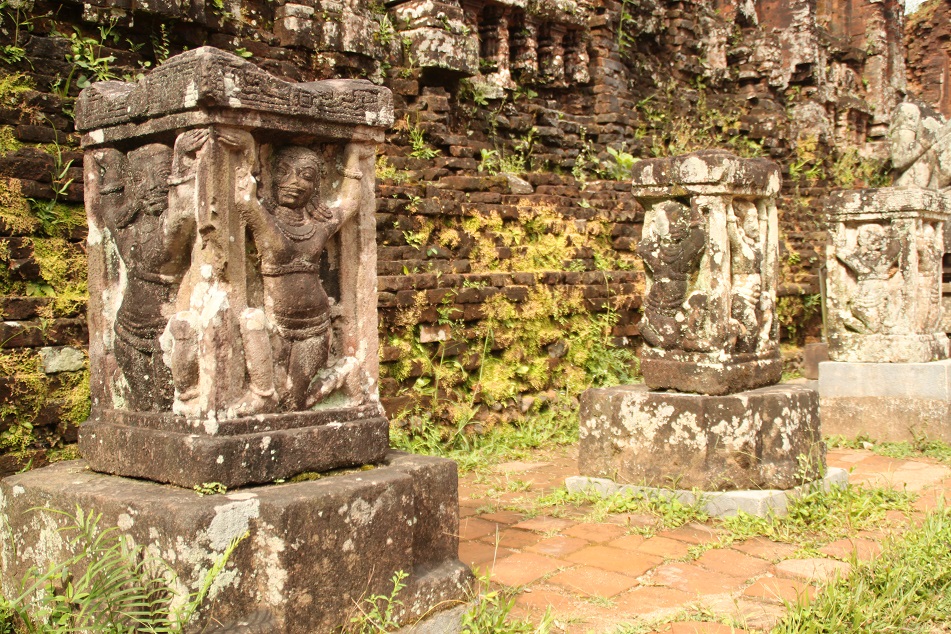
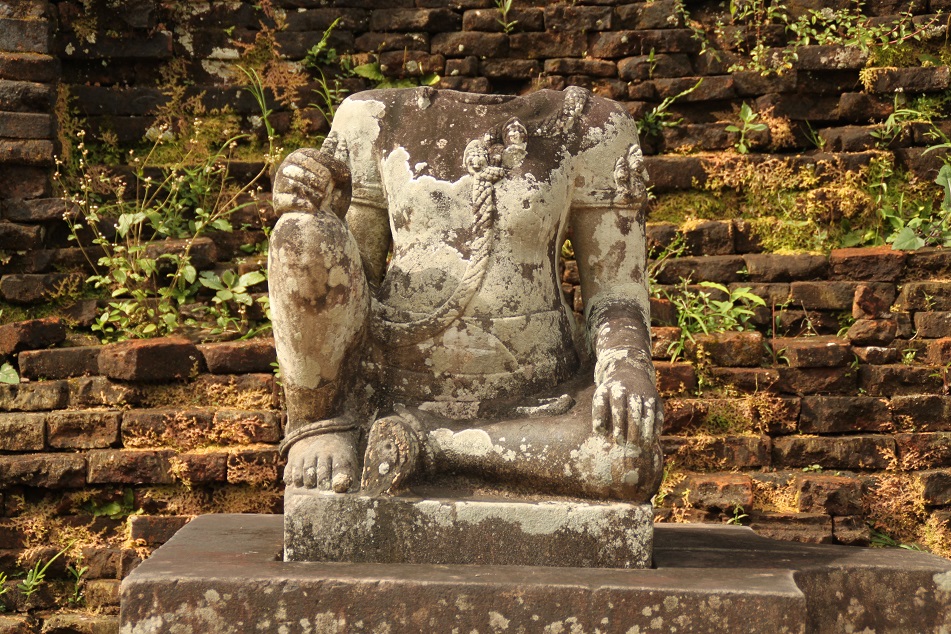



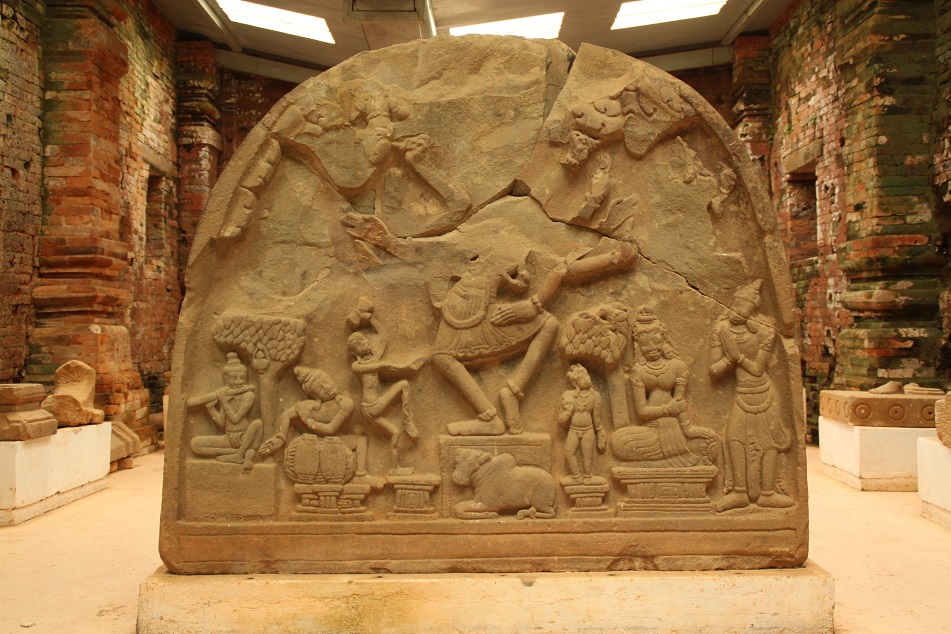



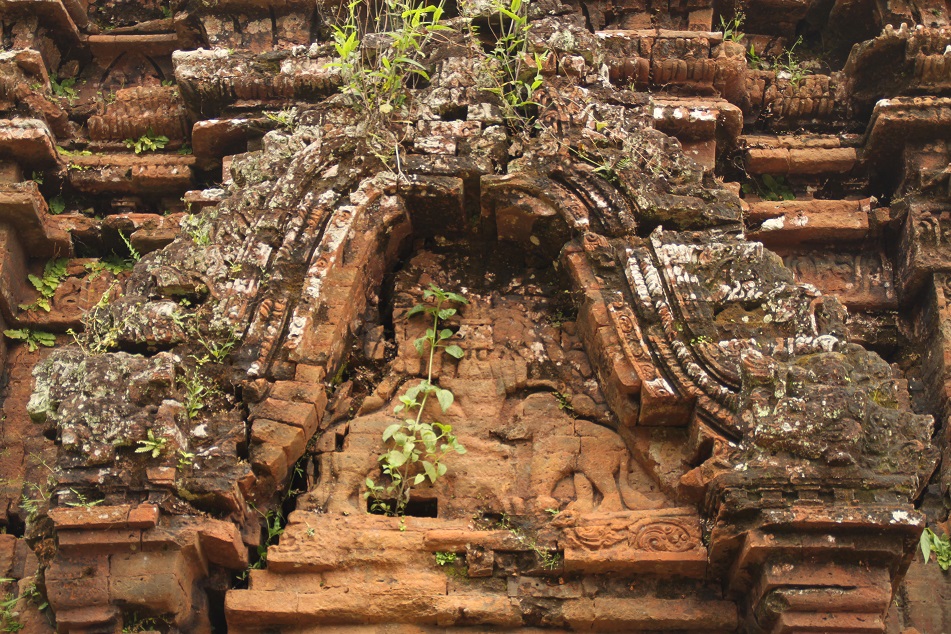
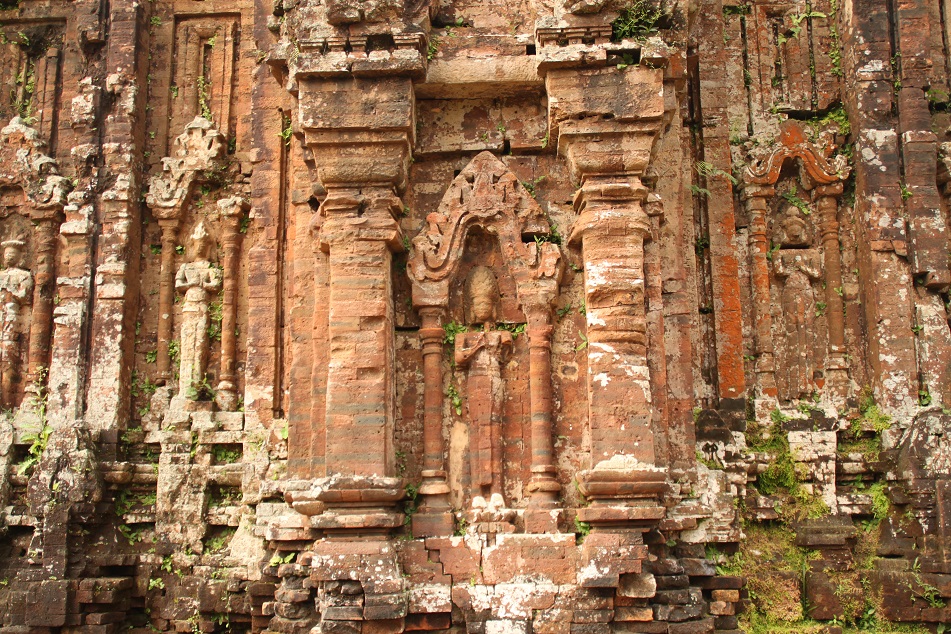



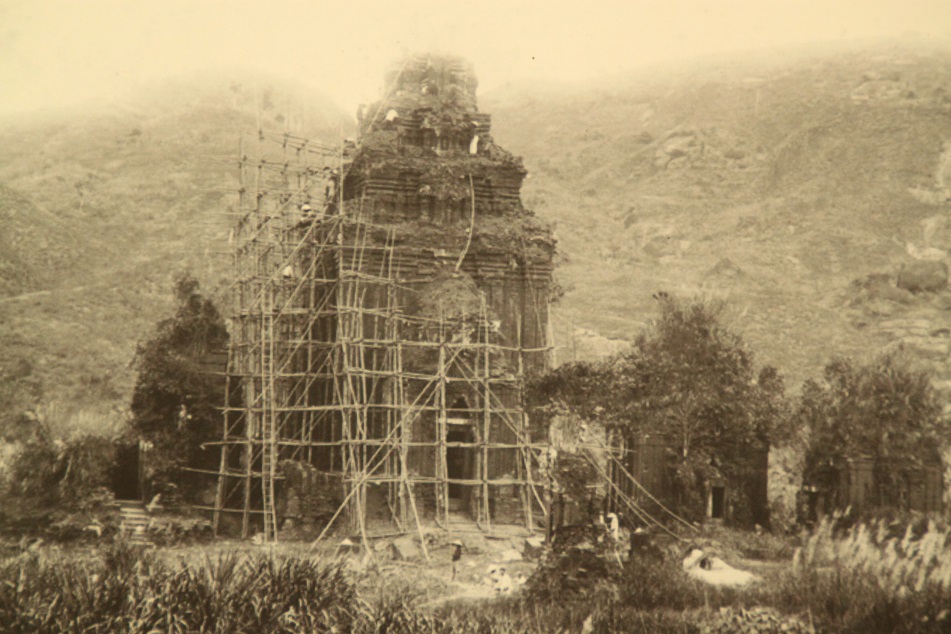

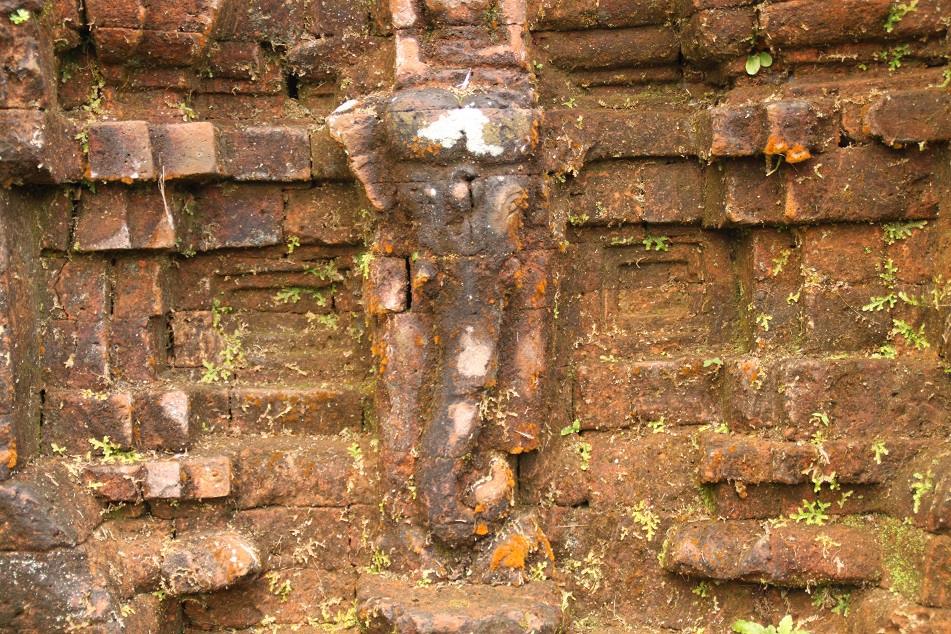



Great cultures, the Cham and the Viet.
LikeLiked by 1 person
Indeed. The Viet themselves built numerous impressive palaces, temples and pagodas over the course of centuries. Thanks for dropping by, Pablo.
LikeLiked by 1 person
Reblogged this on 2wholeminutes LLC and commented:
Nature, history, peace…
LikeLike
Mas Bamaaaaa…. aku baca ini sambil mengenang perjalananku kesana, yang waktu itu sedikit gerimis. Tapi kalo baca postingan dari mas Bama ini enak sekali soalnya runut hahaha. Dan yang paling aku suka kali ini adalah paragraf terakhir karena aku merasakan hal yang sama saat disana.
Tapi disana ga ketemu uler kan? Aku sempet ngeri2 sedap gitu pas mau moto Garuda abis harus ngelewatin semak2 tinggi banget. Kalo tuh ular muncul kan nantinya terjadi adegan jejeritan ctar membahana seantero kompleks candi.
LikeLike
Jujur saya pas di sana sering keingetan tulisan Mbak Riyanti. Pas lihat penunjuk arah untuk belok kiri dari jalan utama menuju My Son, saya langsung ngeh, oh ini yang ditulis Mbak Riyanti di blognya. Pas menelusuri satu demi satu reruntuhan candi yang ada, perasaan saya campur aduk. Antara excited, kagum, sedih, dan khawatir melihat semak belukar dan tumbuhan liar yang merambati sebagian tubuh candi. Lama-lama kan bisa lapuk. Semoga suatu saat My Son ini bisa direkonstruksi seutuhnya supaya bisa bertahan sampai bertahun-tahun mendatang.
Naaah, untungnya gak ada ular mbak pas saya di sana. Tapi pas motret di sekitar A1 agak was-was sih, karena rumput di sekitarnya kan agak tinggi. Wah untungnya Mbak Riyanti gak perlu teriak ya, kalau gak bisa bergetar nanti candi-candi itu. 😀
LikeLiked by 1 person
Thanks for an illuminating post Bama!
1. The saddle roof structure reminded me of the almost-similar looking South Indian gopuram top, which also functioned as granary/special storage space.
2. Hopefully someday you’ll research & write about the Cham & Acehnese link.
All the best Bama!
LikeLiked by 1 person
You’re very welcome, Suwandi. Speaking of South Indian architecture, I wonder if you’re referring to Chola temples like the one in Thanjavur (https://harindabama.com/2016/04/03/the-cholas-conquerors-from-southern-india/). I would love to learn more about how the historical connection between Aceh and Champa — I was quite fascinated myself when I found out about it. Thanks for reading and sharing your thoughts! All the best to you too.
LikeLike
…I just realized that most(?) South Indian temple vimanas are topped by the barrel-shaped sikharas. Like the Thanjavur temple gopura, and all the Sri Menakshi gates & main buildings in Madurai.
Thanks for pointing to the majestic Thanjavur temple, a truly striking sight at sunset. Definitely one of my most memorable experience in Tamil Nadu.
Thanks Bama!
LikeLike
I haven’t been to central or northern India. But judging from the photos on the internet, I guess the architecture of those gopurams in Brihadeeswarar temple in Thanjavur is characteristically South Indian. Thanks again for reading and sharing some insights, Suwandi.
LikeLiked by 1 person
This was a great mix of history, storytelling, and photojournalism. Thanks for sharing 🙂
LikeLike
Much appreciated, Jason. Glad you enjoyed this post.
LikeLike
Such a beautiful post! all i love… architecture, history, nature!
just missing some food somewhere 😀
LikeLiked by 1 person
Ha! Well, I keep my food photos for another post on Vietnam. 🙂 Thanks Julz!
LikeLiked by 1 person
😀
LikeLike
And the same happened to Borobudur — covered in forest and later rediscovered. What a school excursion that must have been.
LikeLike
That is true. A lot of ancient temples in Indonesia were left crumbling following the decline of Hinduism in the archipelago. Many were then damaged by earthquakes, volcanic eruptions, and looting. Some temples fared better upon their rediscovery due to the local belief that they were haunted. Thanks for reading, Mallee.
LikeLike
This was like a trip back in time. So beautiful. Thank you again. I love your blog.
LikeLike
Thank you for such a lovely comment. Visiting places like My Son is indeed like a trip back in time for me. I’m always curious about how those places looked like during their heyday, and how people around them lived.
LikeLiked by 1 person
I have to admit I did a double take at the title in my inbox, thinking this was about a child you had! Silly me ….
I am always taken with photos like this where the temples and other structures almost seem one with the earth. The history here is fascinating, and I can hardly wait until it’s my turn to see this part of the world.
LikeLike
Haha.. Sorry for the confusion. Maybe I should have added how to pronounce this place. It sounds like mee-sewn, more or less.
My Son, Ta Prohm in Cambodia, some temples in Bagan (Myanmar), and a few ancient temples in Indonesia do exude this kind of charm due to their state of preservation. However, as for My Son, despite its status as a world heritage site, the entire compound seems to deserve a better treatment. Hope your turn to see this side of the world comes real soon, Lex!
LikeLiked by 1 person
Bama have you ever considered running tours? With so much knowledge I can’t help but think you would be an astounding guide.
LikeLike
Hmm, actually I haven’t. If my clients were like you, Lex, Madhu, and all the like-minded people, I would be the happiest tour guide ever! But the reality is you can’t really choose your clients, can you? Although it’s true that I do enjoy being a guide for my family and close friends. I guess I should keep that option open. Thanks Sue! 🙂
LikeLiked by 1 person
I was thinking more small group or individual tours. A real niche market of those interested in history/food. Anyway not to go on and on but just a thought that came to me.
LikeLike
Really appreciate your thought, Sue. Actually I need more ideas like this as I don’t want to be too complacent with my current job.
LikeLiked by 1 person
Lovely photographs! Like the ancient Khmer and Javanese, Champa architects were sensational builders.
LikeLike
Thanks! Yes, they really were. If only there were more Champa temples standing today, so we could marvel at their ingenuity and truly understand the extent of their power.
LikeLiked by 1 person
This is engulfing.
I went there this March. Loves the whole country of Vietnam. The journey to the ancient temple itself was an absolute pleasure.
True the temple does reflect Gopuram style and I felt I have time traveled ancient Indian culture.
Amazing Photos you have clicked, , including that of the Elephant head.
They have done a good job of reconstructing the temple. The bomb craters are tight slaps on war monger humanity.
LikeLike
So you went there a month before I did. 🙂 However, I focused on the central part of the country as I have visited some places in the south several years ago. I read there are more Cham ruins to the south which are in a much better condition than those in My Son. Did you also go there?
Actually when I was at My Son, there were some Indian experts working on the restoration of one of the lesser temples. I wonder if they were from ASI. Thanks for reading!
LikeLiked by 1 person
Possible,. We have many ancient worship places/forts and even without bombing them, we need to brush them up every now and then.
No, no southern Vietnam this time. Will be posting all Vietnam wondering this weekend, you may have a look 🙂
LikeLike
Sure, I’ll have a look this weekend.
LikeLiked by 1 person
Wow! Incredible!
LikeLike
Even at its current state, My Son Sanctuary does still retain its past magnificence.
LikeLike
i wonder why all places in South East Asia have similarity like this, they all have some temple in the middle of jungle and all shape like pyramid
LikeLike
Natural disasters, wars, and mass conversion of religion were among the main reasons for those temples to be abandoned. I guess the same thing can be said to most Mayan ruins in Central America which were deserted following the decline of the local powers. As for the architecture, there is in fact a great variety of architectural styles in Southeast Asia. Angkor, Champa, Medang, Singhasari, Bagan, Siam, and others have their distinct styles reflected on their temples.
LikeLiked by 1 person
Bama, as always, this was a deeply fascinating post! After reading about how My Son was carpet bombed by the Americans in the Vietnam War, I was expecting the worst – that precious little of its temples remained intact. So I was delighted when we reached the structures at Group B and C. One wonders why the US military didn’t have the foresight to declare the site and its surroundings a no-bombing zone… that old photo of A1 is a poignant reminder of just what was lost.
LikeLike
Thanks James! Our visit to My Son made me think of ancient places around the world that have been damaged by wars — such a loss to humanity! If only My Son and Dong Duong were spared from bombing like Kyoto, they would have provided us all with more information of the past.
LikeLike
Wow! Sounds and looks amazing.
LikeLike
It really does, Katie Marie. Imagine how much more magnificent it would have looked like had no bomb been dropped.
LikeLike
A great read Bama. And wonderfully atmospheric photos. Brought to mind the bas reliefs of long lines of enslaved Cham in the Bayon temple. Horrified to read about the carpet bombing, I had no idea. Glad much of it survived the war. Too much heritage has been lost to war, but also due to crass neglect.
LikeLike
Thanks Madhu! When I was researching for My Son, Cambodia’s Bayon came to mind due to its bas-reliefs. Not too far from My Son was Dong Duong, a center of Buddhism in the region. An incredibly beautiful and ornate monastery once stood there, but much was bombed during the war. A few parts of it now occupy a section of the Museum of Cham Sculpture in Da Nang. One can only imagine how magnificent it would have looked today had it survived the indifferent bombings.
LikeLike
blog agan sudah saya follow, jika berkenan mohon followback ya!
LikeLike
WOW! I’m mesmerized! Absolutely beautiful 🙂
LikeLike
My Son’s desolation only adds to its charm, doesn’t it? Thanks for dropping by!
LikeLike
This is incredibly interesting to read. I have learnt something new which is always a welcome delight.
LikeLike
Hi Chekii. Thanks for reading! Glad not only did you enjoy this post, but also learned about the history of Champa.
LikeLike
Very nice
LikeLike
My Son really is quite impressive. Thanks for dropping by, Wirasooriya!
LikeLike
I know nothing of this part of the world. I’m grateful and fascinated.
LikeLike
Glad this post gives you a glimpse of Southeast Asia, Adelheid. Thanks for dropping by.
LikeLike
Pingback: Hue Citadel: Echoes of Imperial Vietnam | What an Amazing World!
Wow! I really wanted to see My Son on this trip but couldn’t…it looks like the temples in Cambodia all covered with nature!
LikeLike
You would have loved it, Ritu. My Son is not as expansive as Angkor, but its material (red brick) makes it quite unique and pretty in its own way.
LikeLike
Pingback: Da Nang and the Friendly Dragon | What an Amazing World!
Pingback: The Custodian of Champa’s Treasures | What an Amazing World!
My country Vietnam has many ancient relics. My Son is younger, but has its own unique charm. I still feel overwhelmed by the scale of Angkor Wat in Cambodia (and definitely the gigantic temple has many replications throughout Asia), but My Son gives me such a different nuance of mystical feeling.
LikeLike
Oh I so want to go back to Vietnam to explore more Cham temples! I’m particularly intrigued by Po Nagar and Po Klong Garai — hopefully someday! I can understand why Angkor Wat overwhelmed you, I also felt the same way when I went there back in 2011. However, other ancient ruins in Southeast Asia offer different atmospheres for each of them is unique in its own way. Thanks for reading, Thang!
LikeLike
Pingback: Singhasari: Rise and Fall | What an Amazing World!
Pingback: Hoi An: A Revived Old Beauty | What an Amazing World!
Pingback: Jordan and A Travel Resolution Fulfilled | What an Amazing World!